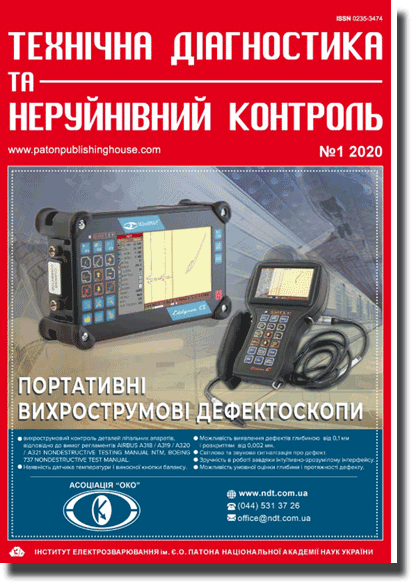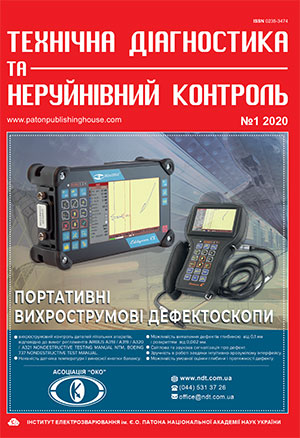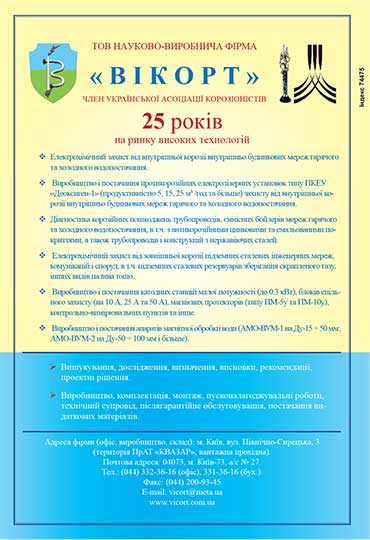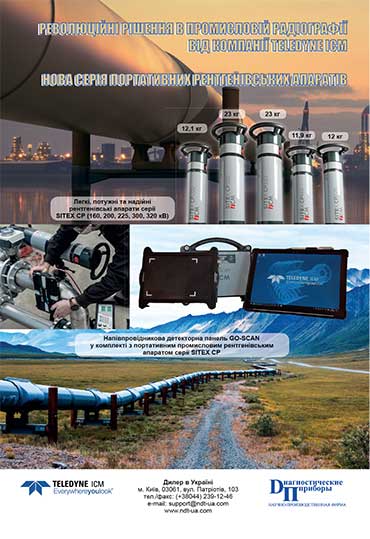| 2020 №01 (04) |
DOI of Article 10.37434/tdnk2020.01.05 |
2020 №01 (06) |
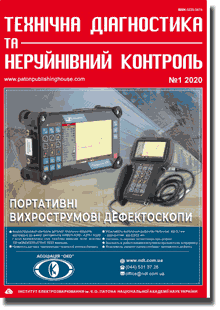
"Tekhnichna Diahnostyka ta Neruinivnyi Kontrol" (Technical Diagnostics and Non-Destructive Testing) #1, 2020, pp. 45-50
Investigation of the impact of structural-phase transformations on the metal magnetic properties
A.V. Gruzevich1, D.L. Nikiforov2, D.A. Derecha4, Yu.B. Skirta3
1Tripolye TPS. 08720, Ukrainka, Obukhov District, Kyiv Region, Ukraine. E-mail: Gruzevich@bigmir.net
2PJSC «Tsentrenergo». 120/4 Kazatskaya Str., 03022, Kyiv, Ukraine.
3Institute of Magnetism of the NAS of Ukraine and MES of Ukraine. 36-b Acad. Vernadskii Blvd., 03142, Kyiv.
4NTUU «Igor Sykorsky Kyiv Polytechnic Institute», 57 Pobedi Prosp., 03056, Kyiv.
Data on interaction of phase, structural and magnetic properties of ferritic-pearlitic steel 12Kh1MF, both in the initial condition and after operation were obtained. It is shown that the highest intensity and magnitude of magnetic response variation are manifested in the metal of heating surface pipes, which have been in operation and have the structure different from the initial one. A possibility is presented of using the magnitude of jumplike changes of magnetic field intensity based on Barkhausen effect, in order to detect zones with inadmissible structural changes in the metal of the heating surfaces, as well as zones of maximum stress concentration, located in the risk zone. 8 Ref., 1 Tabl., 8 Fig.
Keywords: magnetic induction, structural-phase state, Barkhausen effect, heating surface, hysteresis
Received: 09.12.2019
Published: 12.02.2020
References
1. Bozort, R. (1956) Ferromagnetism. Moscow, Inostr. Lit-ra [in Russian].2. Bida, G.V. (2006) Magnetic properties of thermostrengthened steels, nondestructive testing of their quality. Moscow, Marshrut [in Russian].
3. Hakan Gur C. (2019) Microstructure Characterization of Heat-Treated Ferromagnetic Steels by Magnetic Barkhausen Noise Method. Conference Paper, Aug 2019.
4. Gur Hakan, Davut Kemal (2010) Monitoring the Microstructural Evolution in Spheroidized Steels by Magnetic Barkhausen Noise Measurements. Journal of Nondestructive Evaluation, 29, 241-247. https://doi.org/10.1007/s10921-010-0082-4
5. Altpeter I., Cocogo P., Velasco K. (2016) Electromagnetic methods for characterization of materials. Materials Characterization Using Nondestructive Evaluation (NDE) Methods 2016, 225-262. https://doi.org/10.1016/B978-0-08-100040-3.00008-0
6. Anglada-Rivera, Jose & Padovese, L.R. & Capó-Sánchez, J. (2001). Magnetic Barkhausen Noise and hysteresis loop in commercial carbon steel: Influence of applied tensile stress and grain size. Journal of Magnetism and Magnetic Materials. J. Magn Magn Mater. 231, 299-306. https://doi.org/10.1016/S0304-8853(01)00066-X
7. Lo, C.C.H. & Paulsen, Jason & Kinser, Emily & Jiles, David. (2004). Quantitative Evaluation of Stress Distribution in Magnetic Materials by Barkhausen Effect and Magnetic Hysteresis Measurements. Magnetics, IEEE Transactions on, 40, 2173-2175. https://doi.org/10.1109/TMAG.2004.832272
8. Kikuchi, H. & Ara, Khushboo & Kamada, Y. & Kobayashi, Satoru. (2011). Characteristics of Barkhausen Noise Properties and Hysteresis Loop
Advertising in this issue:
The cost of subscription/purchase order journals or individual articles
| Journal/Currency | Annual Set | 1 issue printed |
1 issue |
one article |
| TPWJ/USD | 384 $ | 32 $ | 26 $ | 13 $ |
| TPWJ/EUR | 348 € | 29 € | 24 € | 12 € |
| TPWJ/UAH | 7200 UAH | 600 UAH | 600 UAH | 280 UAH |
| AS/UAH | 1800 UAH | 300 UAH | 300 UAH | 150 UAH |
| AS/USD | 192 $ | 32 $ | 26 $ | 13 $ |
| AS/EUR | 180 € | 30 € | 25 € | 12 € |
| SEM/UAH | 1200 UAH | 300 UAH | 300 UAH | 150 UAH |
| SEM/USD | 128 $ | 32 $ | 26 $ | 13 $ |
| SEM/EUR | 120 € | 30 € | 25 € | 12 € |
| TDNK/UAH | 1200 UAH | 300 UAH | 300 UAH | 150 UAH |
| TDNK/USD | 128 $ | 32 $ | 26 $ | 13 $ |
| TDNK/EUR | 120 € | 30 € | 25 € | 15 € |
AS = «Automatic Welding» - 6 issues per year;
TPWJ = «PATON WELDING JOURNAL» - 12 issues per year;
SEM = «Electrometallurgy Today» - 4 issues per year;
TDNK = «Technical Diagnostics and Non-Destructive Testing» - 4 issues per year.





